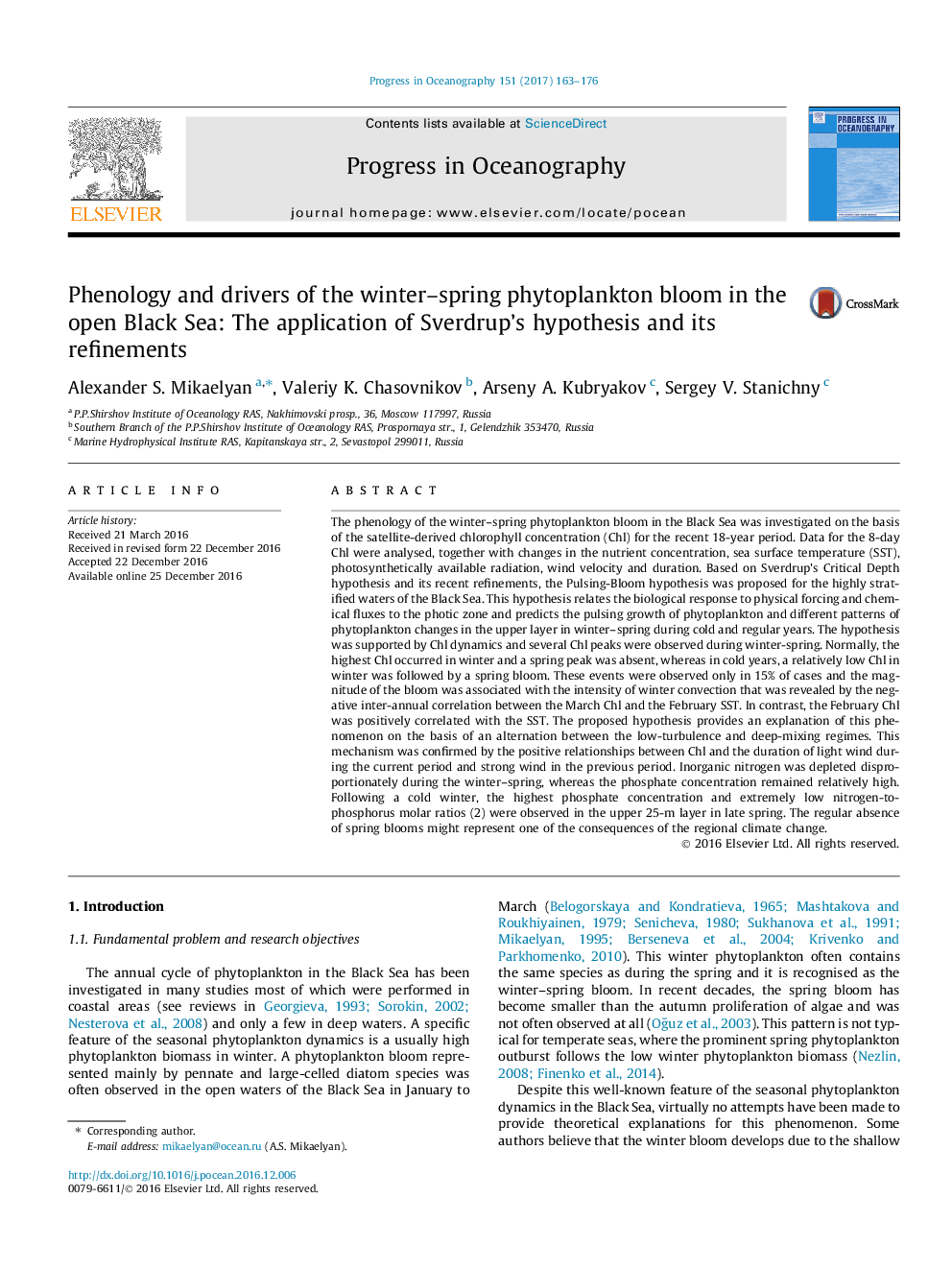| Article ID | Journal | Published Year | Pages | File Type |
|---|---|---|---|---|
| 5766522 | Progress in Oceanography | 2017 | 14 Pages |
•A new Pulsing-Bloom hypothesis of phytoplankton growth in winter-spring in the Black Sea was proposed.•The duration of strong wind increased growth of a phytoplankton during the next period of time.•The duration of light wind increased growth of a phytoplankton during the current period of time.•Classical spring blooms follow only cold winters.•After cold winters the disproportionally high phosphate concentration remains in the top layer.
The phenology of the winter–spring phytoplankton bloom in the Black Sea was investigated on the basis of the satellite-derived chlorophyll concentration (Chl) for the recent 18-year period. Data for the 8-day Chl were analysed, together with changes in the nutrient concentration, sea surface temperature (SST), photosynthetically available radiation, wind velocity and duration. Based on Sverdrup’s Critical Depth hypothesis and its recent refinements, the Pulsing-Bloom hypothesis was proposed for the highly stratified waters of the Black Sea. This hypothesis relates the biological response to physical forcing and chemical fluxes to the photic zone and predicts the pulsing growth of phytoplankton and different patterns of phytoplankton changes in the upper layer in winter–spring during cold and regular years. The hypothesis was supported by Chl dynamics and several Chl peaks were observed during winter-spring. Normally, the highest Chl occurred in winter and a spring peak was absent, whereas in cold years, a relatively low Chl in winter was followed by a spring bloom. These events were observed only in 15% of cases and the magnitude of the bloom was associated with the intensity of winter convection that was revealed by the negative inter-annual correlation between the March Chl and the February SST. In contrast, the February Chl was positively correlated with the SST. The proposed hypothesis provides an explanation of this phenomenon on the basis of an alternation between the low-turbulence and deep-mixing regimes. This mechanism was confirmed by the positive relationships between Chl and the duration of light wind during the current period and strong wind in the previous period. Inorganic nitrogen was depleted disproportionately during the winter–spring, whereas the phosphate concentration remained relatively high. Following a cold winter, the highest phosphate concentration and extremely low nitrogen-to-phosphorus molar ratios (2) were observed in the upper 25-m layer in late spring. The regular absence of spring blooms might represent one of the consequences of the regional climate change.
